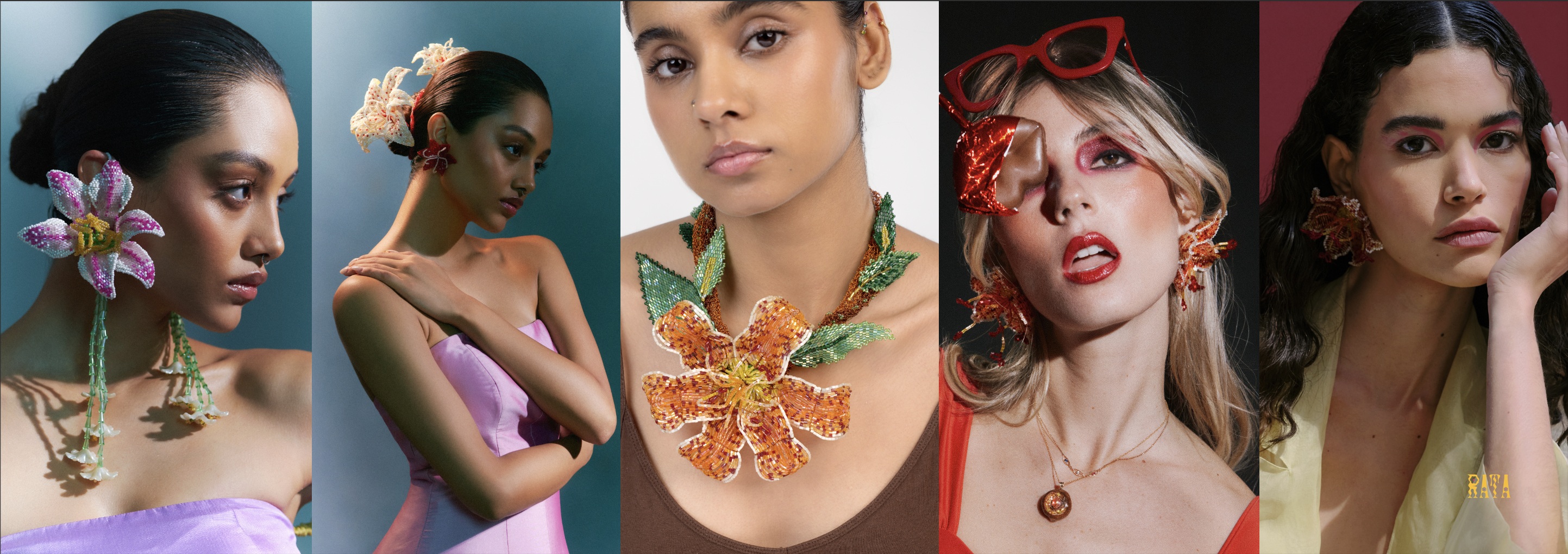In an industry often dominated by surface embellishments and mass production, Rata by Pratiksha Tandon offers a radically different vision — one where jewellery is handwoven, not embroidered, and every bead tells a story of patience, intention, and artistry. With a freeform technique that sets it apart from traditional crafts like zardozi and adda, Rata is carving a niche in contemporary Indian design by embracing slowness, sustainability, and soul

In a world where fast fashion dominates and embroidery often takes centre stage in Indian design, a quiet revolution is unfolding — one bead at a time. Rata, the brainchild of designer Pratiksha Tandon, is bringing a fresh language to contemporary jewellery, not with threadwork or embellishment, but with a painstakingly slow and soulful art: hand-weaving.
At first glance, Rata’s pieces might echo the intricate detail of zardozi or adda embroidery, but their construction is fundamentally different. There are no looms, no fabric bases, no outlines to follow. Instead, each Czech or Japanese glass bead is meticulously threaded into freeform shapes — collars that bloom like petals, brooches that mimic nature, and earrings that feel as much like sculpture as adornment.
This technique stands apart from traditional embroidery, which decorates existing surfaces. At Rata, the process creates — the structure, form, and final piece are all born from a continuous act of weaving. The results are not only tactile and lightweight but emotionally resonant, each piece shaped by patience and presence.
The brand has found fans far beyond India’s borders. From a showcase at Flying Solo in New York to appearances on tastemakers like Natasha Poonawalla, Rata’s understated elegance and craft-first ethos have struck a chord with a global audience hungry for authenticity.
Inside its New Delhi studio, Rata is as intentional about workspace culture as it is about design. Natural light, ergonomic seating, and shared playlists form the rhythm of the day, with tea breaks and playful bead contests fostering community. Sustainability is integral: all pieces are made to order, reducing excess, and packaging is eco-conscious — cloth potlis replace boxes, while the team continues to seek alternatives to plastic for safe transit.
Tandon, who once worked in the chaos of the mainstream design world, founded Rata as an antidote — a slower, quieter practice that centres joy and care. For her, the act of making is as vital as the object itself.
In today’s saturated jewellery market, Rata offers something rare: an original craft, a meditative process, and a refusal to rush. It’s not chasing trends — it’s curating moments. As the industry looks toward the next wave of Indian design talent, Rata stands out as a thoughtful, tactile voice — weaving not just jewellery, but meaning.
Be the first to comment